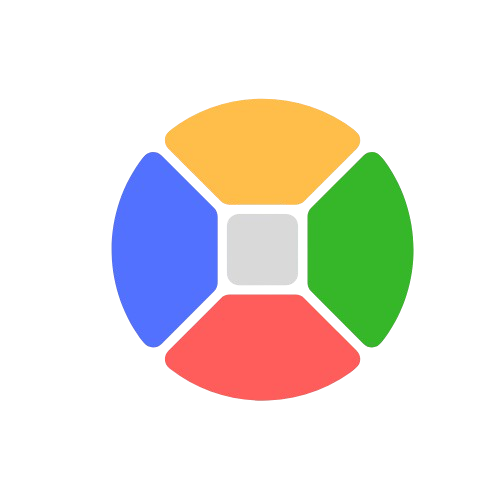Google Ads’ Performance Max campaigns have revolutionized the way businesses optimize their ads across Google’s wide-reaching platforms, including Search, Display, YouTube, and Gmail. This goal-based campaign type combines automation, machine learning, and access to all available Google Ads inventory to help businesses maximize performance. However, to truly unlock the potential of Performance Max, it’s essential to adopt the right strategies and tactics.
In this blog, we’ll walk through the key steps, tips, and best practices to ensure your Performance Max campaigns deliver the best results.
What Are Performance Max Campaigns?
Performance Max is a type of campaign in Google Ads that uses machine learning to optimize performance across Google’s entire advertising ecosystem. Unlike traditional campaigns that focus on individual platforms, Performance Max delivers ads across all Google channels, including:
This holistic approach allows businesses to reach their target audience at every stage of the customer journey, from discovery to conversion.
Why Choose Performance Max?
Performance Max offers several benefits over traditional Google Ads campaigns, including:
- Automation: Performance Max leverages automation to optimize ads, bidding strategies, and targeting to deliver the best results.
- Cross-channel reach: It enables advertisers to connect with audiences across multiple platforms without the need for separate campaigns.
- Data-driven insights: Machine learning algorithms continuously analyze data to provide actionable insights and optimize performance.
- Audience targeting: Performance Max lets advertisers signal audience intent, improving ad relevancy and driving more qualified traffic.
- Simplified management: With all-in-one reporting and optimization tools, Performance Max campaigns reduce the complexity of managing ads across different channels.
Key Components of a Performance Max Campaign
To get the most out of Performance Max, it’s crucial to understand its key components:
1. Audience Signals
Audience signals help Google’s machine learning algorithm understand your target audience better. While Performance Max automates much of the targeting process, inputting audience signals gives the system a starting point for optimization. Audience signals can include:
- First-party data: Customer lists, website visitors, and engagement data.
- Demographics: Age, gender, income level, etc.
- Interests: Users’ online behaviors and search intent.
By providing Google with high-quality audience signals, you can guide the algorithm toward users who are more likely to convert, improving the campaign’s overall performance.
2. Creative Assets
Assets are the individual components of your ads, including headlines, images, videos, and descriptions. Google uses these assets to create personalized ad combinations that appear across different platforms and formats.
Best practices for asset creation:
- Diverse visuals: Provide a range of high-quality images and videos that represent your brand.
- Compelling headlines: Craft short, attention-grabbing headlines that communicate your value proposition.
- Concise descriptions: Ensure your descriptions highlight key product or service features and include strong calls to action.
It’s essential to continually test and optimize your creative assets to improve engagement and conversion rates across different Google channels.
3. Bidding Strategies
Performance Max campaigns allow you to choose from several automated bidding strategies based on your goals:
- Maximize Conversions: Focuses on driving the highest possible number of conversions within your budget.
- Maximize Conversion Value: Optimizes for the highest return on ad spend (ROAS).
- Target CPA (Cost per Acquisition): Focuses on driving conversions at a specified cost.
- Target ROAS: Aims to maximize revenue by targeting a specific return on ad spend.
Choosing the right bidding strategy depends on your campaign goals. For instance, if you want to increase overall conversions, maximizing conversion volume might be ideal. If revenue growth is the priority, targeting ROAS ensures that you’re driving the most valuable conversions.
Setting Up Your Performance Max Campaign
Here’s a step-by-step guide to setting up a Performance Max campaign for success:
1. Define Your Goals
Before diving into campaign setup, clearly define your objectives. Are you focused on lead generation, eCommerce sales, or increasing brand awareness? Knowing your goals will help you choose the right bidding strategy and optimize your campaigns effectively.
2. Create Audience Signals
Leverage Google’s machine learning by feeding in strong audience signals. Upload customer data, and consider using Google’s custom audience feature to target users based on their search behavior, website visits, or interactions with similar brands.
3. Build Your Creative Assets
Provide Google with a diverse range of assets, including images, videos, headlines, and descriptions. Make sure to include variations that speak to different user intents across the customer journey—from awareness to consideration and conversion.
4. Set Up Conversion Tracking
To accurately measure campaign success, ensure you’ve set up proper conversion tracking in Google Ads. This includes tracking key actions like purchases, form submissions, or phone calls. Accurate data collection is vital for Google’s machine learning algorithms to optimize performance based on real-time insights.
5. Monitor and Optimize
Performance Max campaigns are highly automated, but it’s essential to regularly review campaign performance, including the effectiveness of your creative assets, audience signals, and bidding strategies. Adjust these elements based on data insights to ensure ongoing optimization.
Common Mistakes to Avoid
While Performance Max campaigns can drive great results, there are common mistakes that can limit performance:
1. Not Providing Enough Assets
Since Performance Max relies on assets to create ads, failing to provide a wide range of high-quality visuals, videos, and copy can hinder performance. Ensure you supply Google with enough material to create varied ad formats across platforms.
2. Neglecting Audience Signals
While Performance Max automates audience targeting, providing robust audience signals gives the algorithm the best possible starting point. Failing to define your audience signals can result in lower ad relevance and reduced conversions.
3. Ignoring Conversion Tracking
Without proper conversion tracking, Google’s machine learning won’t have the data it needs to optimize campaigns effectively. Double-check that all conversion actions are tracked and recorded accurately.
4. Overlooking Negative Signals
Negative audience signals help prevent your ads from being shown to users who are unlikely to convert. By excluding irrelevant audiences, you can focus your budget on high-quality traffic.
Advanced Strategies for Performance Max Campaigns
1. Test New Creative Ideas
Google’s automation allows you to experiment with different creative assets easily. Use this opportunity to A/B test new headlines, visuals, or videos. This continuous testing helps discover which creatives resonate best with your audience, improving engagement and conversion rates.
2. Leverage Seasonal Trends
Adjust your campaigns to capitalize on seasonal trends or industry events. Whether it’s a holiday promotion, back-to-school season, or industry-specific sales periods, aligning your ads with the season can help you tap into heightened consumer interest.
3. Use Audience Insights for Optimization
Google provides detailed audience insights within Performance Max campaigns. Regularly review these insights to understand which audience segments are driving the most conversions and tailor your strategy accordingly. This might involve adjusting your bidding strategies, focusing on specific demographics, or creating new audience segments.
Conclusion
Performance Max campaigns offer a powerful way to maximize your reach and achieve your marketing goals across Google’s entire advertising network. By understanding and implementing the strategies outlined in this guide—such as setting clear goals, using audience signals, and optimizing your creative assets—you can unlock the full potential of this innovative campaign type.
Regular optimization, continuous testing, and strategic use of automation will help you stay ahead of the competition and drive consistent, valuable results for your business.




